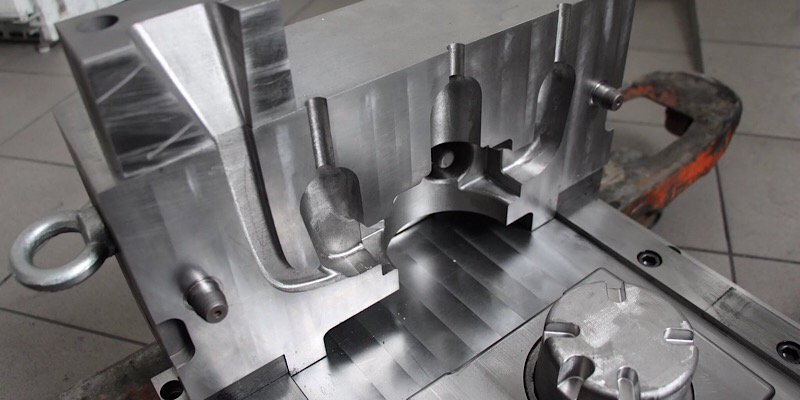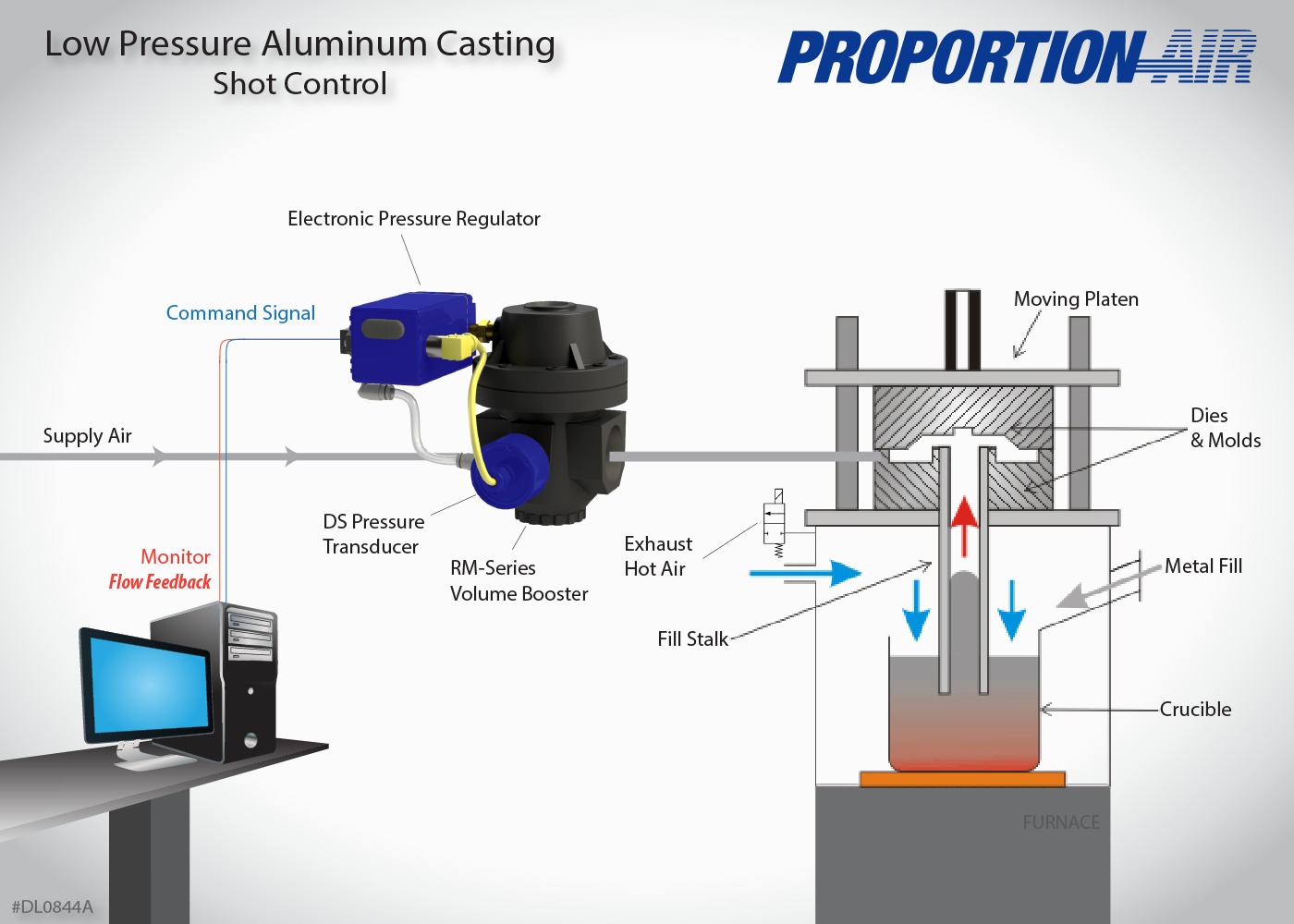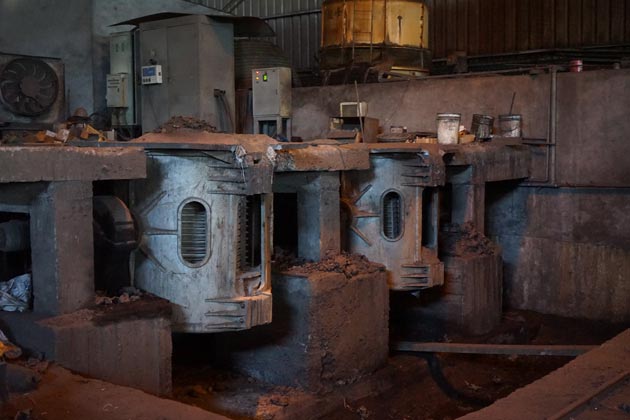Aluminum Foundry Wisconsin drives progress in casting technologies
Wiki Article
A Comprehensive Overview to the Techniques Utilized in Aluminum Foundry Workflow
Aluminum Foundry operations employ numerous casting techniques, each with distinctive procedures and applications. Understanding these approaches is necessary for maximizing manufacturing and accomplishing desired product residential properties. From sand casting to pass away spreading, the options available can considerably impact efficiency and expense. As modern technology breakthroughs, so as well do these strategies, prompting a more detailed exam of their advantages and restrictions. The implications of these advancements call for additional expedition.Introduction of Aluminum Spreading Techniques
Aluminum spreading strategies encompass a selection of approaches utilized to shape liquified Aluminum into preferred forms. These techniques are crucial in the production and engineering industries, using adaptability and performance. Major strategies consist of die spreading, which utilizes high-pressure to inject Aluminum into mold and mildews for accuracy components, and gravity casting, where liquified Aluminum is poured into molds under the influence of gravity, enabling for larger, less intricate forms. Financial investment casting, an additional approach, includes developing a wax pattern coated in ceramic, supplying high dimensional accuracy for elaborate layouts. Furthermore, long-term mold spreading makes use of reusable molds, boosting production effectiveness and decreasing waste. Each technique caters to details applications, stabilizing elements such as price, manufacturing quantity, and material homes. As industries evolve, developments in these casting approaches remain to improve the high quality and performance of Aluminum components, placing them as crucial procedures within contemporary production.Sand Spreading: Process and Applications
Sand spreading is an extensively utilized approach in the Foundry sector, recognized for its simplicity and flexibility. Aluminum Foundry. This procedure entails producing a mold from a combination of sand and a bonding representative, normally clay. The mold and mildew is formed around a pattern, which is a replica of the desired end product. When the mold is prepared, molten Aluminum is poured right into the dental caries, permitting it to solidify right into the desired formAmong the key advantages of sand spreading is its capability to create big elements and intricate geometries, making it ideal for numerous applications, including automotive parts, equipment elements, and ornamental items. In addition, sand spreading can suit various Aluminum alloys, improving its versatility. The procedure is affordable for reduced to medium production runs, as it does not need costly tooling. Overall, sand spreading stays an essential strategy in Aluminum Foundry procedures due to its performance in conference diverse production needs.
Die Spreading: Advantages and Limitations
While die spreading is frequently contrasted to sand casting, it uses unique benefits and constraints that make it suitable for details applications in the Aluminum Foundry industry. One considerable benefit of die casting is its capability to produce intricate shapes with high dimensional accuracy and outstanding surface finish. This procedure is specifically helpful for automation, as it enables faster cycle times and decreased labor costs. In addition, die casting lessens material waste, boosting total performance.Nevertheless, pass away casting additionally has limitations. The preliminary tooling expenses are reasonably high, making it much less feasible for tiny production runs. The process is finest matched for metals with reduced melting points, which can limit material choices. Pass away spreading is likewise minimal relating to the maximum size of the components generated, as bigger components might call for alternate methods. Stabilizing these elements is vital for determining the ideal application of die spreading in the Aluminum Foundry field.
Investment Spreading: Precision and Information
Investment casting is a highly accurate production process that enables elaborate styles and fine information in Aluminum components. This technique provides significant advantages, consisting of enhanced dimensional accuracy and reduced machining demands. Its applications cover different industries, highlighting its adaptability and efficiency in producing complicated parts.Refine Summary
The investment casting procedure is renowned for its ability to create elaborate shapes and high-precision elements. This approach begins with producing a wax pattern, which is then coated with a ceramic covering. Once the shell sets, the wax is dissolved, leaving an exact tooth cavity for the liquified metal. The Aluminum is put right into this tooth cavity, capturing the great information of the initial pattern. After cooling down, the ceramic covering is damaged away, disclosing the cast component. Any kind of required completing job, such as machining or surface treatment, is carried out to accomplish the desired specs. This process is specifically helpful for complex geometries that are difficult to accomplish with traditional spreading strategies, ensuring both high quality and precision in the end product.Benefits of Precision
Accuracy in financial investment casting uses significant benefits, making it a preferred selection for making complex elements. This method makes it possible for the manufacturing of complex shapes with tight resistances, decreasing the requirement for extensive machining and decreasing product waste. The capacity to attain high dimensional precision translates to a superior fit and finish, enhancing the overall top quality of the last product. In addition, financial investment casting permits the unification of fine details, which is necessary for parts calling for intricate layouts. The procedure also supports using numerous Aluminum alloys, better broadening its applicability. Overall, the precision used by financial investment spreading not only boosts the useful and visual qualities of elements but likewise adds to boosted effectiveness in production cycles.Applications in Market
While several manufacturing processes exist, investment casting attracts attention for its adaptability throughout different sectors, especially in sectors demanding high precision and detailed elements. This spreading technique is extensively used in aerospace, vehicle, and clinical fields, where intricate designs and tight resistances are crucial. Aerospace parts profit from investment casting's capability to produce intricate geometries that reduce weight without giving up structural honesty. The automotive market employs this strategy to make engine components that require toughness and precision. In the clinical market, financial investment spreading enables the manufacturing of surgical instruments and implants that should satisfy strict high quality criteria. In general, investment spreading greatly boosts item efficiency and integrity, making it an important strategy in contemporary production applications.Comparison of Casting Approaches
 The comparison of casting approaches reveals distinctive benefits and applications across different strategies - Aluminum Foundry. Sand casting is usually celebrated for its versatility and cost-effectiveness, while die spreading is acknowledged for its performance and precision in creating high quantities. Investment spreading, previously reviewed, showcases its distinct capability to create complex layouts, helpful resources even more stressing the varied capabilities of each method in Aluminum Foundry operations
The comparison of casting approaches reveals distinctive benefits and applications across different strategies - Aluminum Foundry. Sand casting is usually celebrated for its versatility and cost-effectiveness, while die spreading is acknowledged for its performance and precision in creating high quantities. Investment spreading, previously reviewed, showcases its distinct capability to create complex layouts, helpful resources even more stressing the varied capabilities of each method in Aluminum Foundry operationsSand Spreading Advantages
Sand spreading supplies numerous advantages when compared to other casting techniques, making it a favored selection in numerous manufacturing applications. One of the main benefits is its inexpensive, as the materials required, such as sand and metal, are affordable and readily available. Furthermore, sand casting enables for higher style versatility, making it possible for the manufacturing of intricate forms and huge parts that might be testing to attain with various other strategies. The procedure additionally suits a large range of metal alloys, including Aluminum, enhancing its flexibility. Sand molds can be conveniently fixed or changed for subsequent casts, making it efficient for both big and little production runs. Generally, these advantages add to sand spreading's popularity in the Foundry industry.Pass Away Casting Techniques
Pass away spreading techniques stand out as a very effective method for producing metal components, especially when compared to typical casting methods like sand spreading. This process entails requiring liquified Aluminum into a mold and mildew under high stress, resulting in specific dimensions and a smooth surface area finish. Unlike sand spreading, which needs comprehensive finishing job, pass away casting decreases post-production processing, enhancing overall performance. In addition, die casting can accommodate complex geometries, enabling for complex styles that would certainly be testing to accomplish with other techniques. The speed of production is another benefit; die spreading can generate large quantities of components in a shorter duration. Overall, the mix of accuracy, performance, and style versatility makes pass away casting a favored selection in modern-day Aluminum Foundry procedures.Financial Investment Spreading Applications
Financial investment casting, frequently described as lost-wax casting, offers distinct benefits over various other casting techniques, specifically relative to precision and surface finish. This technique enables the creation of detailed forms and great information that are tough to attain with sand or pass away spreading. Furthermore, investment casting produces components with exceptional dimensional accuracy, decreasing the need for comprehensive machining. Its adaptability makes it ideal for numerous sectors, consisting of aerospace, auto, and clinical tools, where top quality components are important. Compared to die casting, which can be limited by mold complexity, investment spreading masters creating intricate geometries without endangering architectural integrity. Consequently, the choice of financial investment spreading ends up being significantly favorable for applications demanding high efficiency and integrity.
High Quality Control in Aluminum Foundry Operations
How can Aluminum shops assure the finest quality in their items? Executing strenuous high quality control measures is necessary. Foundries commonly begin by you could try these out developing clear specifications for the Aluminum alloys made use of, ensuring they fulfill industry requirements. Continuous surveillance during the melting and putting processes assists identify any type of deviations from preferred chemical make-ups.Additionally, aesthetic evaluations and non-destructive screening methods, such as ultrasonic or X-ray assessments, are commonly utilized to identify internal flaws or inconsistencies in castings. Furthermore, analytical procedure control strategies track production data, permitting for very early identification of potential issues.
Routine training and qualification of personnel in quality control methods are crucial for keeping high criteria. Ultimately, implementing comments loops from clients can aid shops improve their processes and enhance product high quality. By sticking to these techniques, Aluminum factories can consistently deliver high-quality products that meet or exceed consumer assumptions.
Future Patterns in Aluminum Casting Technology
Advancements in Aluminum spreading modern technology are poised to reshape the industry landscape, structure upon well established high quality control methods. Developments such as additive production and clever Foundry options are emerging, allowing boosted layout versatility and reduced waste. The assimilation of expert system and artificial intelligence in procedure tracking enables real-time modifications, improving performance and product quality.Sustainability continues to be an essential emphasis, with an emphasis on reusing scrap read more Aluminum and minimizing energy consumption. Advanced alloy formulas are being developed to maximize performance while minimizing ecological impact. The fostering of automated systems, including robotics for managing and pouring, assures to improve workplace security and accuracy.
Additionally, electronic twins are obtaining traction, enabling online simulations that facilitate far better decision-making and predictive upkeep. As these trends advance, they will likely produce a more reliable, lasting, and technologically advanced Aluminum spreading industry, setting new criteria for high quality and efficiency.
Frequently Asked Inquiries
What Safety and security Procedures Should Be Taken in Aluminum Foundry Operations?
In Aluminum Foundry procedures, essential safety and security procedures include individual safety devices, appropriate air flow, routine training, threat analyses, emergency readiness, and adherence to procedures to reduce risks related to molten metal and heavy equipment.Exactly How Is Recycled Aluminum Utilized in Foundry Processes?
Recycled Aluminum is typically utilized in Foundry procedures to reduce ecological impact and production expenses. It undergoes melting and refining, permitting suppliers to develop top notch products while preserving energy and minimizing waste in the Aluminum lifecycle.What Devices Is Essential for Aluminum Casting?
Essential equipment for Aluminum casting consists of heating systems for melting, mold and mildews for shaping, putting ladles, cooling down systems, and finishing devices. Each element plays a vital duty in guaranteeing the efficiency and high quality of the casting procedure.Just How Do Ecological Rules Effect Aluminum Foundries?
Environmental policies considerably affect Aluminum factories by enforcing limits on discharges and waste administration. Compliance requires investment in cleaner modern technologies, which can boost operational expenses but ultimately advertises sustainability and decreases the ecological footprint of the industry.
What Prevail Issues in Aluminum Castings and Their Solutions?
Typical defects in Aluminum castings consist of surface, contraction, and porosity blemishes. Solutions entail maximizing melt top quality, managing cooling rates, and utilizing appropriate mold layout, ensuring far better honesty and efficiency of the last cast items. Major techniques include die spreading, which employs high-pressure to infuse Aluminum into molds for accuracy components, and gravity spreading, where molten Aluminum is put right into molds under the influence of gravity, permitting for bigger, less intricate forms. While die spreading is usually compared to sand casting, it uses unique benefits and constraints that make it appropriate for particular applications in the Aluminum Foundry sector. Sand spreading is often commemorated for its versatility and cost-effectiveness, while die casting is acknowledged for its efficiency and accuracy in creating high quantities. Die spreading strategies stand out as a very reliable approach for creating metal parts, particularly when compared to traditional casting approaches like sand spreading. Compared to die casting, which can be limited by mold and mildew complexity, investment spreading excels in creating complex geometries without compromising structural stability.
Major techniques include die spreading, which employs high-pressure to infuse Aluminum into molds for accuracy components, and gravity spreading, where molten Aluminum is put right into molds under the influence of gravity, permitting for bigger, less intricate forms. While die spreading is usually compared to sand casting, it uses unique benefits and constraints that make it appropriate for particular applications in the Aluminum Foundry sector. Sand spreading is often commemorated for its versatility and cost-effectiveness, while die casting is acknowledged for its efficiency and accuracy in creating high quantities. Die spreading strategies stand out as a very reliable approach for creating metal parts, particularly when compared to traditional casting approaches like sand spreading. Compared to die casting, which can be limited by mold and mildew complexity, investment spreading excels in creating complex geometries without compromising structural stability.Report this wiki page